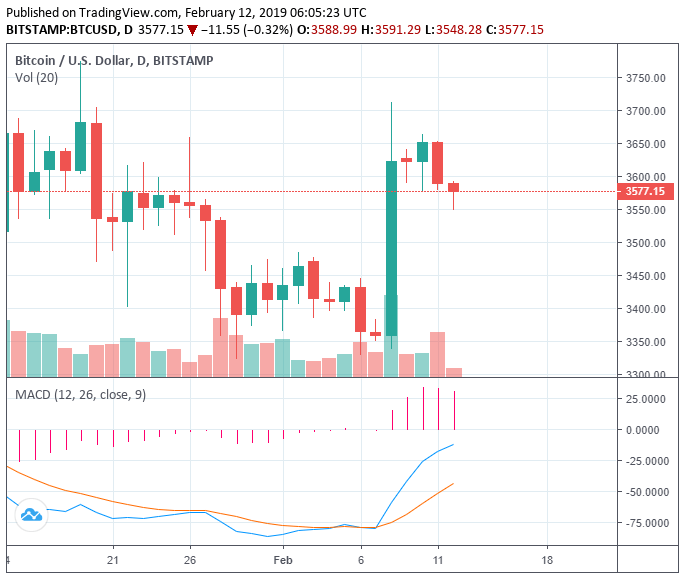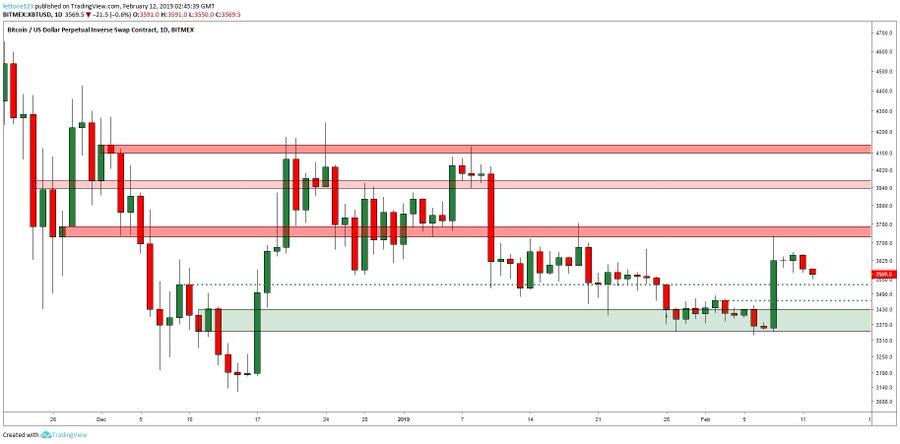In the past two months, several traders who shorted Bitcoin from its all-time high at $20,000 have started to cash out in the $3,000 to $4,000 range.
The closure of several long-term Bitcoin short contracts followed the publicized cash out of former International Monetary Fund (IMF) economist Mark Dow’s short contract on Bitcoin in December.
Speaking to Bloomberg, on Dec 18, 2018, Dow said:
I’m done. I don’t want to try to ride this thing to zero. I don’t want to try to squeeze more out of the lemon. I don’t want to think about it. It seemed like the right time.
A LOW ENOUGH RANGE FOR BITCOIN
Throughout the past 14 months of the worst bear market in the history of the cryptocurrency market, Bitcoin had some promising rallies that were acknowledged as a potential full-fledged trend reversal by many investors.
In February 2018, for instance, the Bitcoin price increased from $5,920 to $11,780 at its monthly peak, demonstrating solid momentum backed by a high daily trading volume.
Three months after the rally of BTC from the $5,000 region to nearly $12,000, the digital asset initiated another recovery, surpassing the $10,000 level once again in a relatively short period of time.
Despite positive technical indicators and the optimistic sentiment portrayed by the majority of investors in the cryptocurrency market, traders like Dow did not consider cashing out their short contracts for large profits.
At $3,000, traders found a low enough range to cash out, set aside the profits, and observe the market.
The Bitcoin price could certainly face more bloodbath in the weeks to come as it approaches the final phase of its 14-month bear market.
Some industry experts including Multicoin Capital’s Vinny Lingham and Ledger CEO Eric Larchevêque believe the current crypto winter could transform into nuclear winter and last up to 24 months.
“We think we could have 12-24 more months of a bear market. Or some kind of nuclear winter in crypto. So we are just adapting the growth of the company to make sure we can withstand two years of bear market,” Larchevêque told CCN in an interview.
However, even if Bitcoin falls from the $3,000 support level, which it has defended fairly well in the past four months, the $3,000 region is a safe place to lock in profits and ride out a potential accumulation phase that may occur after a bottom is established
Simply put, traders expect the bottom of BTC to be established in a region that is not far away from the $3,000 mark. While it could take a long time for a proper bottom to be created, analysts foresee a recovery by the latter half of 2019 due to various fundamental factors including the halvening of BTC’s block reward.
SHORT-TERM OUTLOOK OF THE CRYPTO MARKET
In the last 24 hours, the valuation of the crypto market has slightly retraced from $122 billion to $120 billion.
On February 9, the market demonstrated a strong overnight rally, adding $10 billion in a span of four hours.
With the momentum of the global market, a handful of cryptocurrencies including Litecoin demonstrated gains in the 20 to 30 percent range against the U.S. dollar.
In the near-term, stability in the price of BTC is expected to increase as volatility in the cryptocurrency market declines, and as such, the crypto market could remain in the tight $120 billion to $125 billion range in the foreseeable future.
Currently, Bitcoin is struggling to test key resistance levels in the high $3,000 region and depending on the performance of BTC in the next 24 hours, the asset could show signs of a short-term recovery or risk a further drop below the mid-$3,000 level.
Editor’s note at 13:00, 02/12/2019: The article has been amended for clarity.











No comments:
Post a Comment